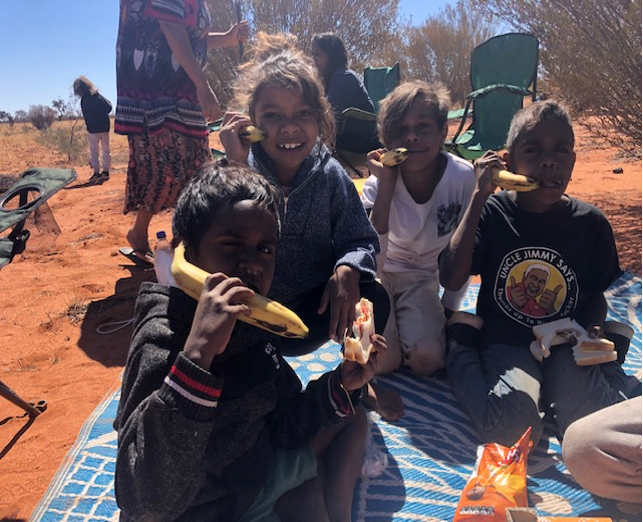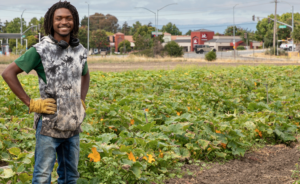Given the history of food banks, it would seem that those in the U.S. would have little to learn from their global counterparts.
Food banks started as an American invention of the 1960s, and did not really spread abroad until the founding of the Global FoodBanking Network in 2006. Despite their relative youth, some food banks in other parts of the world now have lessons to impart to their U.S. peers when it comes to meeting the needs of underserved populations.
From Guatemala to Australia, a growing number of food banks are taking steps to better serve populations that have long suffered from discrimination and generational poverty. No matter the specific population being served, these food banks have found that establishing trust is the single most important step to helping those who have grown accustomed to living on the sidelines.

“Our philosophy is that change moves at the speed of trust,” said Kirstin Beardsley, Chief Network Services Officer at Food Banks Canada, the country’s national association of food banks. “It’s coming to the table to listen and understand priorities in that community and really focusing on where our support is wanted and needed.”
Canadian food banks have found that food assistance doesn’t always mean providing food. It sometimes means improving access to the traditional food of Indigenous people, such as seals, fish and venison.
While hunting has become expensive in the modern world, it is still the best way for the Indigenous Inuit populations of Canada to feed their communities. In the remote Northern territory of Nunavut and its capital city, Iqaluit, Food Banks Canada has provided gas to Inuit hunters for their snowmobiles. One seal hunt made possible through the assistance recently provided enough food for 150 people, Beardsley said.
In Northern Alberta, funding was used to help clear a road that leads to a fishing lake. The lake was used as a primary food source for hundreds of years before overgrowth made it impossible to get to in the 1970s. With the lake once again accessible, fish is now available to the community, and elders can teach the next generation how to fish using traditions passed down through the centuries.
“The path we’re on right now is about acknowledging our role in building proper relationships and about doing the work to understand the role of our organization in relation to colonialism,” said Beardsley. “It’s really about getting access to food to communities in need.”

In Ecuador, while Indigenous communities often use food banks, Banco de Alimentos Quito also works with them to be suppliers for the food bank network. “They’re not so much our beneficiaries as we’re trying to get into a partnership,” said Jose Luis Guevara, Executive Director, in an interview conducted and translated by Global FoodBanking Network. “So they benefit and we benefit.”
Working with the Ministry of Agriculture in Ecuador, the food bank has connected with different Indigenous groups across the country. By introducing itself and forming relationships, Banco de Alimentos Quito seeks to reap some of the groups’ yearly harvests in exchange for other goods.
For example, the food bank might provide feed for pigs in exchange for pork, or organic material for compost in exchange for potatoes. Other times, services are traded. In one community, the food bank arranges for a physical education teacher to give dance therapy classes whenever it comes to harvest the community’s lemons.
Banco de Alimentos Quito is planning to escalate this philosophy into a full-scale agricultural surplus recovery program, an idea it took from food banks in Colombia. Such programs focus on taking surplus food from communities and redistributing it throughout the food bank’s network, helping both the food bank and the Indigenous communities grow and improve.
“I think that, worldwide, people who really want to help you normally end up being those that have the least,” Santiago Rodriguez, Program Lead of the agricultural surplus recovery program at Banco de Alimentos Quito, said to the Global FoodBanking Network. “If we give them an opportunity to help us, it sort of feeds their spirit. They want to help.”
For the Food Bank of South Australia, employing First Nations people at its warehouses and distribution center is vital for establishing trust within the community and ensuring that information is communicated correctly.

The food bank is opening a new warehouse and distribution center in a town that hasn’t received meaningful food assistance in 20 years. The center will also serve nine local Indigenous communities. One of the food bank’s first hires in this effort was Jessica Wishart, a member of the local Arrernte people, as Regional Manager.
“The reason we felt it was important to have somebody locally who understood the culture and the people that we’re going to be dealing with is the fact that, that we don’t know what we don’t know,” said Greg Pattinson, Chief Executive Officer of Food Bank of South Australia.
Australia has over 500 different Aboriginal peoples and just as many languages. In the town where the new center will open, there are at least four languages spoken, all of which will need translations on food labels, recipes and health services communications. The food bank is also bringing into the warehouse an Aboriginal person who understands most local languages to assist with these hurdles.
Given an unemployment rate of over 40% for Aboriginal people, the new site will have a training program for First Nations young adults to receive forklift, retail, storage, and warehouse training, so they can be qualified for jobs with local businesses.
The food bank plans to distribute extra meat and protein to the communities served by the new center. Pattinson said it would not have understood the need for extra protein, if the food bank had walked in with a solution instead of listening to First Nations leaders.
Desarrollo en Movimiento in Guatemala has also found that listening to community leaders and being sensitive to culture is important when providing food to the traditional Indigenous population. The food bank was established four years ago and began serving Indigenous communities two years ago.
Having communities be explicit about their wants and needs builds trust and reduces waste in the long run. For example, the Indigenous peoples typically do not eat cereal or milk, nor some fresh produce like tomatoes, and would much rather have corn.
“You cannot say, ‘Oh, yeah, we’re gonna give you these food stocks,’” said Juan Pablo Ruano Vargas, Project Manager for Desarrollo en Movimiento, in an interview conducted by Global FoodBanking Network. “You have to know them before you do that. They want to know what they can expect of you.” — Zachary Smith
Zachary Smith is a freelance reporter and student at the Craig Newmark Graduate School of Journalism at CUNY, where he specializes in health and data reporting. Formerly an intern with Food Bank News, Zachary has recently been published with Everyday Health, Bklyner, and the NYCity News Service.
CAPTION ABOVE: The school breakfast program in a remote region of Central Australia.
Like what you’re reading?
Support Food Bank News







